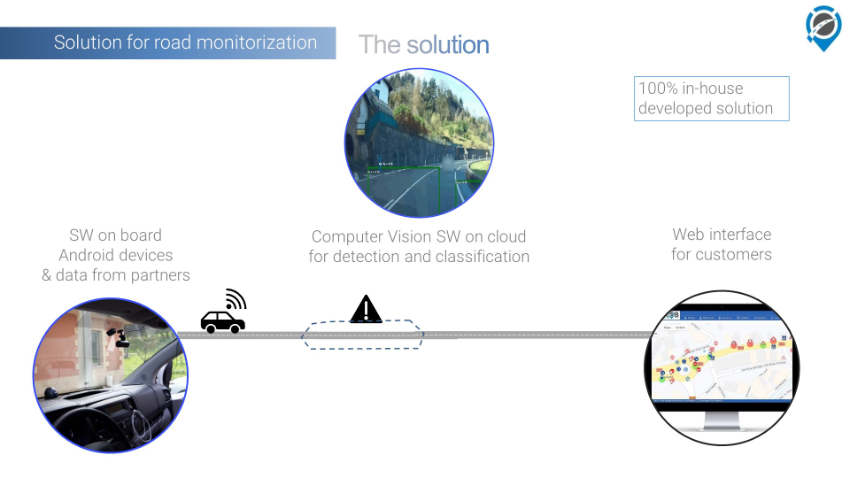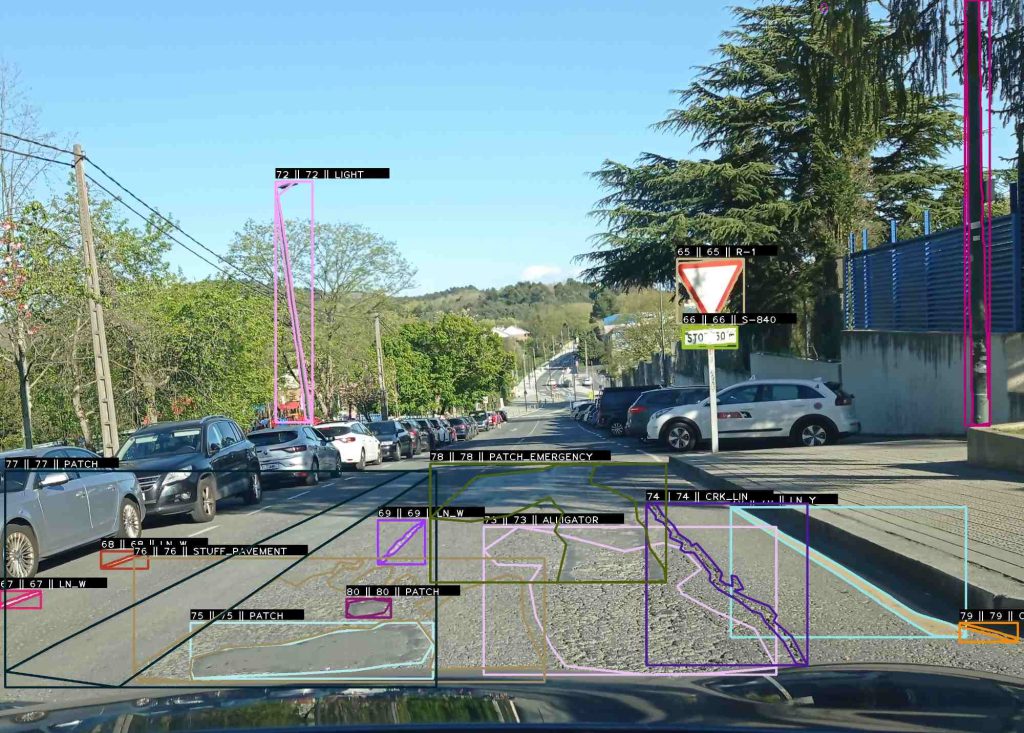ASIMOB is a technology-based company created in Bilbao (north of Spain), born with the aim of improving the safety of current road users and Autonomous Vehicles of the future. Their solutions are aimed at Road Authorities, maintenance companies, highways concessionaires and infrastructure data managers, since they will obtain objective data for action and investment decisions.
Interview with Ibon Arechalde, CEO of ASIMOB.
Easy Engineering: What are the main areas of activity of the company?
Ibon Arechalde: ASIMOB is focused on the digital transformation of infrastructure inspection.
In 30% of the accidents, the road infrastructure has played a relevant role, sometimes worsening the consequences of the accident and on other occasions causing it.
Monitoring the condition of the road is the first basic step for maintenance. The way it is done today is the same as it was 40 years ago. The maintenance workers must do regular visual inspections. They have the responsibility to spot all incidences, execute minor repair works, and report major maintenance issues. If they observe something wrong, they stop, take pictures or make notes and, at the end of the day, send that information to the manager.
Traditional road maintenance methods, based on visual inspections by human, do not allow a substantial improvement in the efficiency of said maintenance. It is labour-intensive and prone to errors.
The Cognitive Artificial Intelligence and other technologies, are enablers of the automation of the supervision of the visibility of road signage, as well as the irregularities of the highway and other crucial safety parameters.
ASIMOB has developed the Autonomous Road Inspector for interurban roads and the Autonomous Urban Inspector for cities, in order to transform some vehicles that already drive the city in autonomous inspectors. Traffic signs, road markings, safety barriers and status of the pavement can be detected, classified and analysed to detect defects in an automatic way.
E.E: What’s the news about new products/services?
I.A: The Autonomous Road Inspector is proposed as Data as a Service for Road Authorities in charge of the maintenance of the infrastructure, Road Safety evaluation and/or adoption of Autonomous Vehicles.
The inspector is composed of three parts:
On-board equipment, with two lightweighted devices, installed in vehicles that circulate normally on streets and roads, to collect data and video of the places to be monitored.
Cloud services based on Google Cloud that automatically detect, classify and analyse traffic signs, road markings, pavement irregularities and protections, thanks to Computer Vision and Data Analytics.
Web application that displays information with high added value for end users. It can be connected through an API to Smart City platforms or traffic platforms and the information can be mixed with other external sources.

Until now the inspector has obtained data in nine different countries: Spain, The Netherlands, Belgium, Serbia, Saudi Arabia, Israel, Canada, Brazil and Romania.
E.E: What are the ranges of products/services?
I.A: The generated data are useful for the responsible of infrastructures in municipalities, regional Administrations, Ministries, airports, ports…
Currently we offer information about traffic signs, road markings, safety barriers and status of the pavement. In each case we create automatically the inventory of the assets but also detect defects as is the case of the presence of stickers and graffities in signs, the poorly painted road markings, the shocks in the barriers and the cracks, potholes and other irregularities in the pavement.

We are developing more Computer Vision models to evaluate other assets in the near future.
E.E: What is the state of the market where you are currently active?
I.A: The Autonomous Road Inspector is a very disruptive solution in the sector.
The infrastructure inspection market is very broad. In Europe there are more than 100,000 entities that own streets or highways. In all of them, the work has been done manually over the last decades, and almost always through small local companies.
Currently, all entities are beginning to accept the need of a digital transformation and, as in any transformation, the main obstacle is the adaptation of organizations to change.
In our case, we try to look for public entities that are leaders in digital transformation, to achieve reference clients who, in addition, get involved and give us feedback on the service.
Contrary to what it may seem a priori, our developed projects do not depend so much on the level of development of the countries of the entities with which we work, but rather on the capacity of said entities to innovate and transform, given the circumstance that small municipalities or regional administrations are being more flexible than other larger or more developed entities.
E.E: What can you tell us about market trends?
I.A: Several technologies have emerged in the last decade to address the digitalization of infrastructure management, from different points of view.
On the one hand, as an evolution of the BIM methodologies used in buildings, the LiDAR based technologies have emerged to allow the generation of point clouds and 3D environments. LiDAR technologies help to measure the environment in a very accurate way, although they cannot interpret the world like humans.
On the other hand, the vehicle manufacturers themselves have discovered a new source of income by selling infrastructure-related data obtained from their own vehicles. Those data are very useful for improving traffic management and incidents on the road, although they have certain limitations for infrastructure management.
Finally, technologies based on cognitive Artificial Intelligence, such as Computer Vision, allow to capture the environment with a “human” approach, but with greater performance comparing to humans. These technologies allow infrastructures to be analysed as if there were thousands of experts visually inspecting them.
In coming years all the technologies will evolve, and the future trend will be the fusion of some of these technologies and the specialization of others.
E.E: What are the most innovative products/services marketed?
I.A: The Autonomous Road Inspector is a very disruptive solution and only used in some Administrations yet.
The main challenge is how to approach to different countries and even different entities in the same country. The roads are very similar in all the countries, and the problems they have are also similar, but there are so many entities in charge of roads that it is difficult to reach all of them that understand the technology and are willing to use it.
E.E: What estimations do you have for 2024?
I.A: In 2024 we will start projects in some new countries. We have already started in Romania.
Technically we will launch new Computer Vision models for some assets typically located in the cities, such as garbage containers, lighting elements and other urban furniture, which will help us better monitor cities.
Our growth expectations are very high and we are working to be the world leader in infrastructure inspections based on Artificial Intelligence worldwide.

